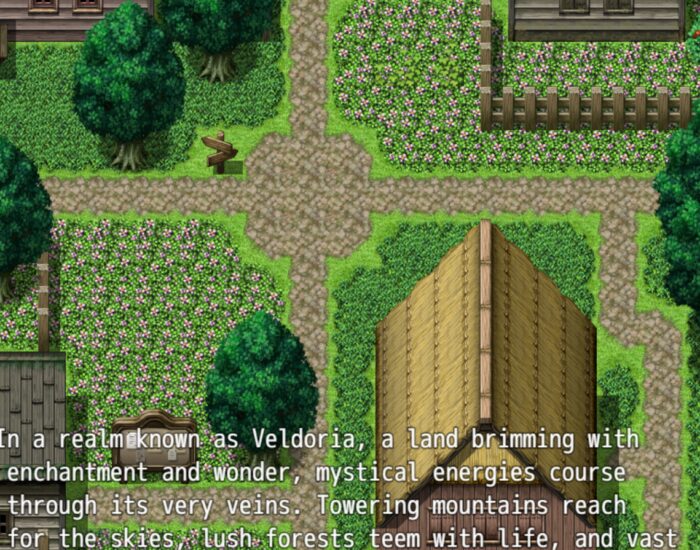Your cart is currently empty!

How to Learn How to Create “Good” RPG Maker Maps

Learning how to create captivating RPG Maker maps is an essential skill for aspiring game developers looking to craft immersive gaming experiences. Whether you’re embarking on a solo project or collaborating with a team, mastering the art of map design can elevate your game to new heights. Here’s an in-depth exploration of how you can hone your mapping skills and create maps that leave a lasting impression on players.
- Study Existing Maps: The first step in mastering RPG Maker mapping is to study existing maps created by professional designers and experienced hobbyists. Analyze the layout, use of tiles, and overall aesthetic of these maps to gain insights into effective mapping techniques. Pay attention to details such as terrain variation, environmental storytelling, and the placement of interactive elements. By deconstructing existing maps, you can learn valuable lessons and discover innovative design ideas to incorporate into your own projects.
- Tutorials and Guides: Dive into the wealth of online tutorials and guides dedicated to RPG Maker mapping. These resources provide step-by-step instructions, practical tips, and expert insights into creating compelling maps. Whether you’re a beginner looking to grasp the basics or an experienced mapper seeking advanced techniques, there are tutorials tailored to every skill level. Explore a variety of mapping styles, from traditional fantasy landscapes to futuristic cityscapes, and experiment with different tilesets and themes to expand your creative repertoire.
- Practice Regularly: Like any skill, mastering RPG Maker mapping requires regular practice and experimentation. Set aside dedicated time to work on mapping projects, whether it’s refining existing maps or starting from scratch. Challenge yourself to explore new techniques, push the boundaries of your creativity, and iterate on your designs based on feedback from peers and mentors. Embrace the iterative process of trial and error, and don’t be afraid to make mistakes – they’re an essential part of the learning journey.
- Join Communities: Joining RPG Maker communities, forums, and Discord channels can provide invaluable support, inspiration, and feedback as you hone your mapping skills. Engage with fellow mappers, share your work-in-progress maps, and participate in mapping contests or challenges to push your creative boundaries. Collaborating with others allows you to learn from different perspectives, exchange ideas, and receive constructive criticism that can help refine your maps and enhance your design abilities.
- Play RPG Maker Games: Immerse yourself in the vibrant world of RPG Maker games created by fellow developers to gain insights into diverse mapping styles and design approaches. Playthroughs of these games allow you to experience firsthand how different mappers tackle map design, storytelling, and gameplay mechanics. Take note of what resonates with you as a player, identify areas for improvement, and draw inspiration from standout maps that leave a lasting impression.
- Study Game Design Principles: Deepen your understanding of fundamental game design principles to create maps that not only look visually appealing but also contribute to a positive player experience. Explore concepts such as player navigation, pacing, balance, and environmental storytelling to imbue your maps with depth and immersion. Consider the role of maps within the broader context of game design, and strive to create cohesive, cohesive, and engaging gameplay experiences that resonate with players on a visceral level.
- Experiment with Events: Dive into the world of eventing in RPG Maker to add interactive elements and dynamic storytelling to your maps. Learn how to create NPCs, puzzles, scripted events, and other interactive features that enhance gameplay and deepen player engagement. Experiment with event triggers, conditions, and variables to create branching narratives, hidden secrets, and memorable moments that captivate players and keep them invested in your game world.
- Read Documentation: Take the time to familiarize yourself with the RPG Maker documentation to gain a comprehensive understanding of the tool’s features, capabilities, and workflow. Explore the mapping tools available within RPG Maker, including tilesets, autotiles, layers, and parallax mapping, to unleash your creativity and bring your vision to life. Refer to the documentation regularly as you navigate the intricacies of map design, and leverage the wealth of resources available to troubleshoot issues, discover new features, and optimize your workflow.
Remember, mastery of RPG Maker mapping is a journey rather than a destination. Embrace the process of continuous learning, experimentation, and refinement as you strive to create maps that captivate, inspire, and delight players. With dedication, perseverance, and a passion for creativity, you can unlock the full potential of RPG Maker mapping and craft digital worlds that leave a lasting impression on players for years to come.

